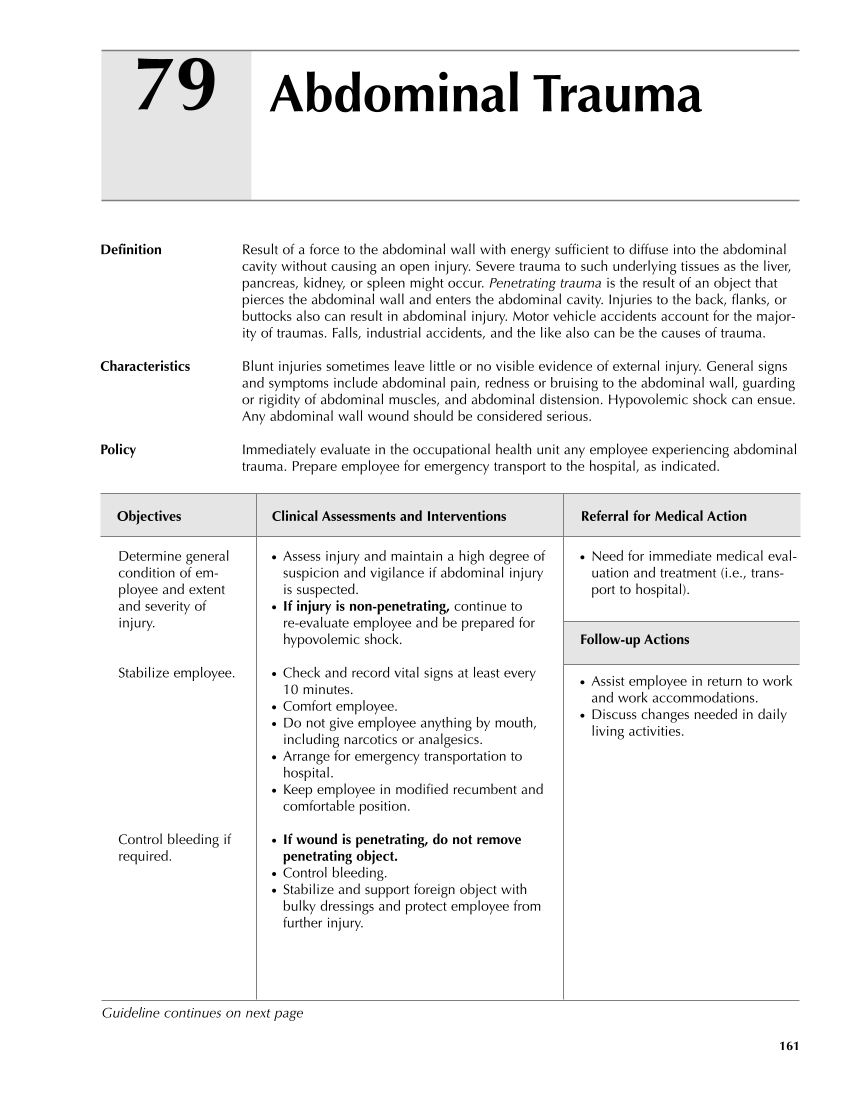161 Abdominal Trauma 79 Definition Result of a force to the abdominal wall with energy sufficient to diffuse into the abdominal cavity without causing an open injury. Severe trauma to such underlying tissues as the liver, pancreas, kidney, or spleen might occur. Penetrating trauma is the result of an object that pierces the abdominal wall and enters the abdominal cavity. Injuries to the back, flanks, or buttocks also can result in abdominal injury. Motor vehicle accidents account for the major- ity of traumas. Falls, industrial accidents, and the like also can be the causes of trauma. Characteristics Blunt injuries sometimes leave little or no visible evidence of external injury. General signs and symptoms include abdominal pain, redness or bruising to the abdominal wall, guarding or rigidity of abdominal muscles, and abdominal distension. Hypovolemic shock can ensue. Any abdominal wall wound should be considered serious. Policy Immediately evaluate in the occupational health unit any employee experiencing abdominal trauma. Prepare employee for emergency transport to the hospital, as indicated. Objectives Clinical Assessments and Interventions Referral for Medical Action ● Need for immediate medical eval- uation and treatment (i.e., trans- port to hospital). Follow-up Actions ● Assist employee in return to work and work accommodations. ● Discuss changes needed in daily living activities. Determine general condition of em- ployee and extent and severity of injury. Stabilize employee. Control bleeding if required. ● Assess injury and maintain a high degree of suspicion and vigilance if abdominal injury is suspected. ● If injury is non-penetrating, continue to re-evaluate employee and be prepared for hypovolemic shock. ● Check and record vital signs at least every 10 minutes. ● Comfort employee. ● Do not give employee anything by mouth, including narcotics or analgesics. ● Arrange for emergency transportation to hospital. ● Keep employee in modified recumbent and comfortable position. ● If wound is penetrating, do not remove penetrating object. ● Control bleeding. ● Stabilize and support foreign object with bulky dressings and protect employee from further injury. Guideline continues on next page
Purchased from OEM Press by (ge corporate access). (C) 2013 OEM Health Information, Inc. All rights reserved.












































































































































































































































































































































































































































